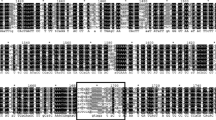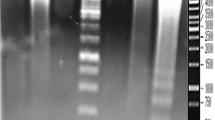Abstract
In the present work, a method for the authentication of meat products was developed, using Polymerase Chain Reaction (PCR) followed by Forensically Informative Nucleotide Sequencing (FINS). This study describes the use of sequencing of the cytochrome b gene of the mtDNA in a wide variety of species to diagnose adulteration of meat through the substitution from one species to another that have less commercial value. The main importance of this work is to deal with a wide variety of species that have not previously been analyzed. This methodology strategy allows the authentication of meat species in all kind of products, fresh, or precooked products, the more usual format for marketing in that species. This method shows a specificity of 100%. The developed methodology was validated and finally applied to 20 commercial samples including some that had been subjected to intensive thermal treatment. In 15% of the products analyzed, the name of the species displayed in the label was not in agreement with the identified species. The main novelty of this work lies in the fact that it allows the identification of a large number of meat species not analyzed so far in previous works. In this work are included meat species, which can be easily found in our markets, and a wide variety of others whose consumption is common in other parts of the world. Therefore, this technique can be used as a routine method to avoid the mislabeling in the marketing of these products and to assess their correct traceability.


Similar content being viewed by others
References
Arvanitoyannis IS, Tsitsika EV, Panagiotaki P (2005) Implementation of quality control methods (physicochemical, microbiological and sensory) in conjunction with multivariate analysis towards fish authenticity. International Journal of Food Science and Technology 40:237–263
Arvanitoyannis IS, Van Houwelingen-Koukaliaroglou M (2003) Implementation of Chemometrics for quality control and authentication of meat and meat products. Critical Reviews in Food Science and Nutrition 43:173–218
COMMISSION DIRECTIVE 2001/101/EC of 26 November 2001 amending Directive 2000/13/EC of the European Parliament and of the Council on the approximation of the laws of the Member States relating to the labelling, presentation and advertising of foodstuffs
Chen FC, Hsieh YHP (2000) Detection of pork in heat-processed meat products by monoclonal antibody-based ELISA. Journal of Aoac International 83:79–85
Schonherr J (2002) Analysis of products of animal origin in feeds by determination of carnosine and related dipeptides by high-performance liquid chromatography. Journal of Agricultural and Food Chemistry 50:1945–1950
Ozgen AO, Ugur M (2000) Animal species determination in sausages usingan SDS–PAGE technique. Archiv für Lebensmittel Hygiene 51:49–53
Haunshi S, Basumatary R, Girish PS, Doley S, Bardoloi RK, Kumar A (2009) Identification of chicken, duck, pigeon and pig meat by species-specific markers of mitochondrial origin. Meat Science 83:454–459
Girish PS, Anjaneyulu ASR, Viswas KN, Anand M, Rajkumar N, Shivakumar BM, Bhaskar S (2004) Sequence analysis of mitochondrial 12S rRNA gene can identify meat species. Meat Science 66:551–556
Girish PS, Anjaneyulu ASR, Viswas KN, Shivakumar BM, Anand M, Patel M, Sharma B (2005) Meat species identification by polymerase chain reaction-restriction fragment length polymorphism (PCR–RFLP) of mitochondrial 12S rRNA gene. Meat Science 70:107–112
Natonek-Wisniewska M, Slota E, Kalisz B (2009) Use of cytochrome B polymorphism for species identification of biological material derived from cattle, sheep, goats, roe deer and red deer. Folia Biologica-Krakow 58:47–50
Stamoulis P, Stamatis C, Sarafidou T, Mamuris Z (2010) Development and application of molecular markers for poultry meat identification in food chain. Food Control 21:1061–1065
La Neve F, Civera T, Mucci N, Bottero MT (2008) Authentication of meat from game and domestic species by SNaPshot minisequencing analysis. Meat Science 80:216–224
Maede D (2006) A strategy for molecular species detection in meat and meat products by PCR–RFLP and DNA sequencing using mitochondrial and chromosomal genetic sequences. European Food Research and Technology 224:209–217
Dalmasso A, Fontanella E, Piatti P, Civera T, Rosati S, Bottero MT (2004) A multiplex PCR assay for the identification of animal species in feedstuffs. Molecular and Cellular Probes 18:81–87
Ghovvati S, Nassiri MR, Mirhoseini SZ, Moussavi AH, Javadmanesh A (2009) Fraud identification in industrial meat products by multiplex PCR assay. Food Control 20:696–699
Koppel R, Zimmerli F, Breitenmoser A (2009) Heptaplex real-time PCR for the identification and quantification of DNA from beef, pork, chicken, turkey, horse meat, sheep (mutton) and goat. European Food Research and Technology 230:125–133
Matsunaga T, Chikuni K, Tanabe R, Muroya S, Shibata K, Yamada J, Shinmura Y (1999) A quick and simple method for the identification of meat species and meat products by PCR assay. Meat Science 51:143–148
Jonker KM, Tilburg J, Hagele GH, De Boer E (2008) Species identification in meat products using real-time PCR. Food Additives and Contaminants 25:527–533
Matsunaga T, Shibata K, Yamada J, Shinmura Y, Chikuni K (1998) Identification of meat species based on the difference of 18 S ribosomal RNA genes. Journal of the Japanese Society for Food Science and Technology-Nippon Shokuhin Kagaku Kogaku Kaishi 45:719–723
Roger SO, Bendich AJ (1988) Extraction of DNA from plant tissues. Plant Mol Biol Manual A6:1–10
Winfrey MR, Rott MA, Wortman AT (1997) Unraveling DNA: molecular biology for the laboratory. Prentice Hall, New York
Hall TA (1999) BioEdit: a user-friendly biological sequence alignment editor and analysis program for Windows 95/98/NT. Nucleic Acids Symp Ser 41:95–98
Thompson JD, Gibson TJ, Plewniak F, Jeanmougin F, Higgins DG (1997) The CLUSTAL_X windows interface: flexible strategies for multiple sequence alignment aided by quality analysis tools. Nucleic Acids Research 25:4876–4882
Tamura K, Dudley J, Nei M, Kumar S (2007) MEGA4: molecular evolutionary genetics analysis (MEGA) software version 4.0. Mol Biol Evol 24:1596–1599
Tamura K, Nei M (1993) Estimation of the number of nucleotide substitutions in the control region of mitochondrial-DNA in humans and chimpanzees. Molecular Biology and Evolution 10:512–526
Saitou N, Nei M (1987) The neighbor-joining method—a new method for reconstructing phylogenetic trees. Molecular Biology and evolution 4:406–425
Bartlett SE, Davidson WS (1992) FINS (Forensically Informative Nucleotide Sequencing): a procedure for identifying the animal origin of biological specimens. Biotechniques 12:408–411
Acknowledgment
We thank Rod Asher (Cawthron Institute, Nelson, New Zealand), Peter Hishon (New Zealand Ostrich Export Corporation, Alexandra), and Arthur Crimp (Wakefield) for providing some of the samples included in this work.
Author information
Authors and Affiliations
Corresponding author
Rights and permissions
About this article
Cite this article
Lago, F.C., Herrero, B., Madriñán, M. et al. Authentication of species in meat products by genetic techniques. Eur Food Res Technol 232, 509–515 (2011). https://doi.org/10.1007/s00217-010-1417-1
Received:
Revised:
Accepted:
Published:
Issue Date:
DOI: https://doi.org/10.1007/s00217-010-1417-1




